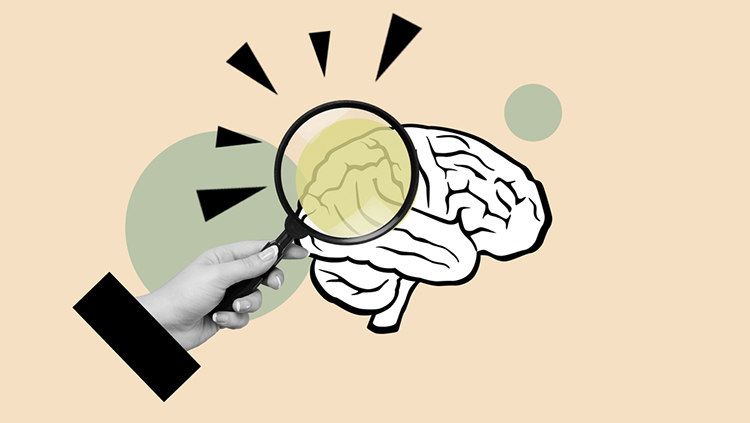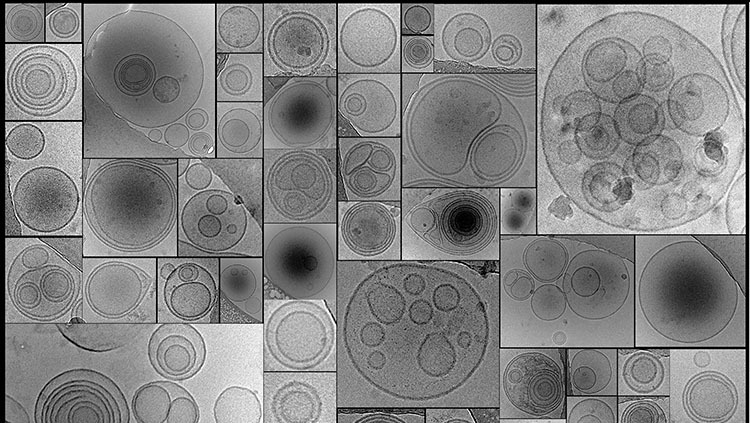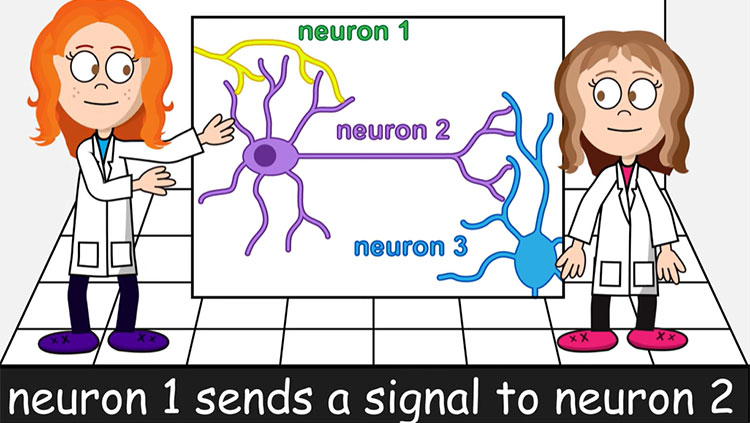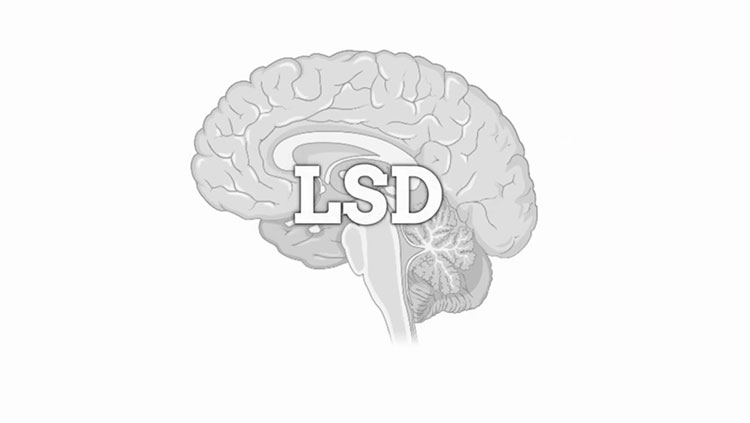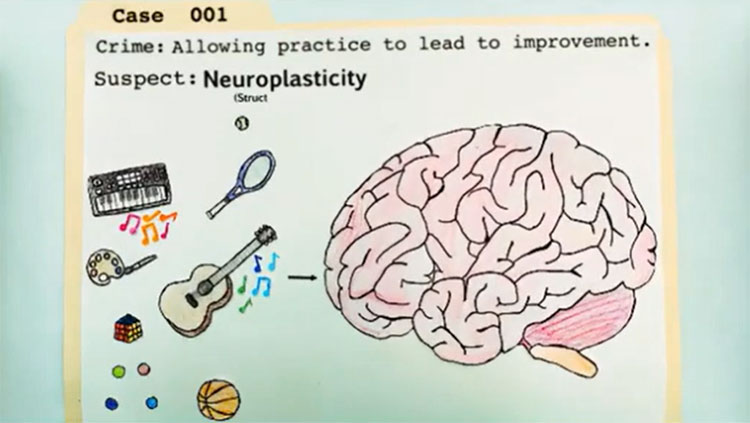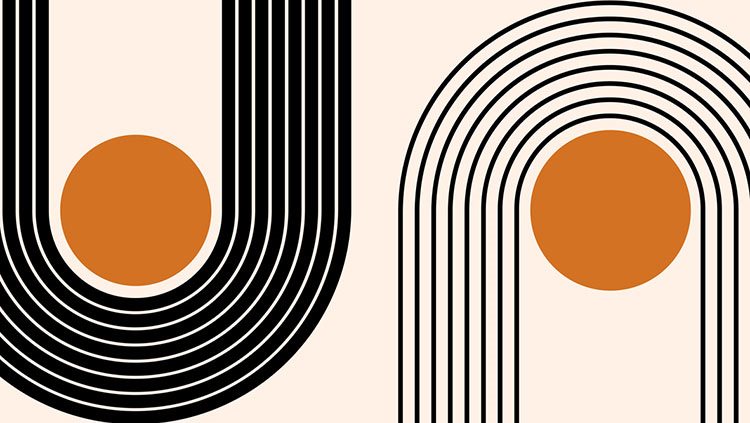Neuroglia and the Brain
- Published18 Oct 2013
- Reviewed18 Oct 2013
- Source BrainFacts/SfN
You have probably heard about neurons, but what about neuroglia? These lesser-known brain cells support and protect neurons. Watch secondary school students Yash Patel, Michelle Goffreda, Robby Vasen, and Kat Lin of High Technology High School, Lincroft, NJ, explore the role and importance of neuroglia in this video, which received the honor of Best High School Submission in the 2013 Brain Awareness Video Contest.
CONTENT PROVIDED BY
BrainFacts/SfN
Transcript
This is a brain. It's grayish, whiteish, and a little bit squishy. It's got a lot of stuff in it, ranging from the renowned neurons and blood vessels to a special, lesser known assortment of cells called glia. A human brain is made 65% of glia, and on average, a mammal has 5-10 glia for every neuron.
In the nervous system, there are glial cells galore. But, what do they do, exactly? The answer is this—a lot.
Glia is really an umbrella term for cells in the nervous system that maintain homeostasis as well as myelinate, protect, and support neurons. Whether you call them neuroglia, glial cells, or glia, these cells do everything that neurons can't do for themselves. While neurons are the stars of the show always in the spotlight, glial cells are their stage crew. The central nervous system and the peripheral nervous system have a multitude of glia that help the neurons function properly, but because we don't have much time, we'll just talk about a few of the most prevalent glial cells in the nervous system.
Firstly, we have microglia. Microglia are specialized macrophages that are capable of phagocytosis. Basically, they're the nurses of the central nervous system as they constantly check on neurons, other macroglia, and blood vessels- and eat up infectious agents. Smaller compared to most other types of glia, microglia have oval nuclei and are usually shifty little things that can change shapes, but they're important in protecting the nervous system from infection..
Then, we also have astrocytes which are a specific type of macroglia. They're called astrocytes because they sort of look like stars. Essentially, astrocytes act as the police and garbagemen of the brain and spinal cord. Not only are they a main component of the blood-brain barrier, but they also regulate the chemical environment, recycle neurotransmitters, digest dead neuron parts, and anchor neurons to their blood supply. Astrocytes are the most abundant of glial cells.
Lastly, we have our oligodendrocytes and Schwann cells. Although they have different shapes and are located in different parts of the nervous system, oligodendrocytes and Schwann cells do basically the same thing- wrap around and myelinate the axons of neurons to form the nodes of Ranvier, increasing nerve conduction. Still, there are several differences between these two types of glia. One - that the oligodendrocytes function in the central nervous system whereas Schwann cells reside in the peripheral nervous system. And two- oligodendrocytes are also able to myelinate more than one neuron but Schwann cells can only cover one.
So as you can see, these adorable little glial cells are quite integral to the functioning of the nervous system and especially the brain. The entirety of their influence is probably most prevalent when things go wrong. Although microglia are helpful in removing diseased brain cells, they can produce cytokines that can damage neurons during Alzheimer's disease.
malfunctioning glial cells may contribute to the neurodegeneration of dopamine-producing cells, in turn leading to Parkinson's disease. But problems with glia are not only associated with neurodegenerative disorders. Post mortem studies have shown that depression and bipolar disorder may be linked to reduced glial size and density in the brain. Even chronic pain has been linked to overactive astrocytes and microglia in the brain and spinal cord.
Now, we can clearly see that glial cells deserve to share the spotlight with our friends the neurons who seem to push the glia off to the side of the stage. It's strange how glia do just as much for the brain as neurons do, but the public almost never hears about them. Today, researchers continue to investigate the functioning of these lesser known neuroglia to better understand the nervous system because a firmer grasp on how glial cells work would facilitate our struggle to understand the full capacity and inner workings of the brain.
Also In Cells & Circuits
Trending
Popular articles on BrainFacts.org


